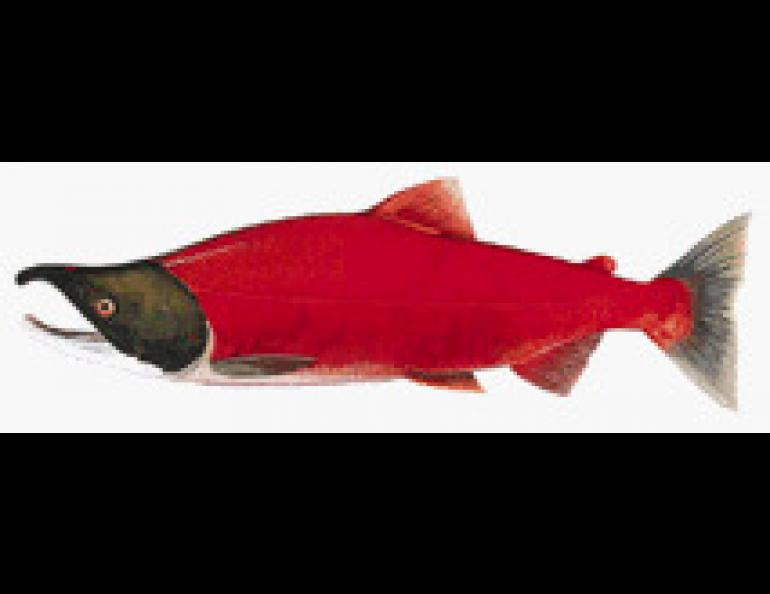
The Life and Times of Fred the Red Salmon
Scooped by dipnetters from Kenai to Chitina, red salmon possibly occupy more freezer space in Alaska than any other fish. For the fisherman who ponders the life of this excellent source of protein, here’s the story of a red named Fred, based on information from the Alaska Department of Fish and Game and other sources:
Fred begins life as one of thousands of eggs resting in the gravel bed of a stream that flows into Paxson Lake. As early as February, Fred hatches into an alevin; alevins are about one-inch long and carry a yolk sac, a leftover pack of nutrients from the egg. Being a tiny, tasty guy sought after by other fish and birds, Fred stays tucked in the gravel during his alevin stage.
In a few months, Fred has absorbed all the nutrients from his yolk sac and he emerges as a fry, growing to a few inches long and developing dark bars along his sides. As a fry, he migrates downstream into Paxson Lake, where he feeds on plankton near the surface. He spends the first year of his life in Paxson Lake.
When the ice breaks up on Paxson Lake in his second spring, Fred feels a mysterious pull toward the ocean and leaves Paxson Lake via the exit ramp of the Gulkana River. He is now a one-quarter ounce smolt, a salmon bound for salt water. After a few days of slicing downstream, Fred enters the Copper River, which drains the glaciers of the Wrangell Mountains. While zipping downstream through the Copper, Fred’s gills and kidneys undergo subtle changes as he adapts for life in salt water.
Fin-to-gill with hundreds of other red salmon, Fred reaches the Copper River delta in early summer. Fred’s world turns from cloudy to clear as he reaches the deep, cold water of the Gulf of Alaska.
His organs adapted to salt water, Fred thrives in the gulf, one of the richest feeding grounds on Earth. He eats crustaceans, small fish, and the occasional squid. He may wander 500 miles out to sea and migrate most of the length of the Aleutian Chain. He sometimes dives to depths greater than 250 feet to feed, but normally stays within 45 feet of the surface.
The ocean version of Fred is metallic greenish-blue on top with silver sidewalls and a white belly. His flesh is brilliant orange. In just two months of ocean life, Fred is sexually mature, but he remains in the ocean with millions of other red salmon. His relatives to the west, in Bristol Bay, make up the largest red salmon fishery in the world. He and his cohorts in North America range from the Canadian arctic to the Klamath River in California.
After three years in the ocean, Fred has grown to the length of a man’s arm and bulked up to seven pounds. Now in his fifth year of life, Fred noses his way back to the Copper River delta. As he passes through brackish water into the fresh water of the Copper River, he stops eating. Fred is now a fish on a mission, guided back to the vicinity of Paxson Lake by chemical markers in the water, Earth’s magnetic field, or perhaps a combination of the two.
Swimming upstream in the Copper River, Fred avoids dipnets held in eddies by fishermen and the fishwheels upstream. He is digesting himself, fueled by the oils and proteins of his own flesh, skeletal structures, and his scales. As he nears Paxson Lake, his body turns a vivid red, his head green, his back develops a hump and his jaws curve into a snarl.
Near where he first wriggled from an egg sac, after clicking off 3,500 miles on his lifetime odometer, Fred sidles up next to a female that is dropping eggs. As the eggs fall to the gravel, he covers them with a stream of milt.
One week later, Fred dies as a five-year old, but he has beaten the odds: Fred is one of only two of the 3,800 eggs his mother dropped that has returned to the spawning grounds.




